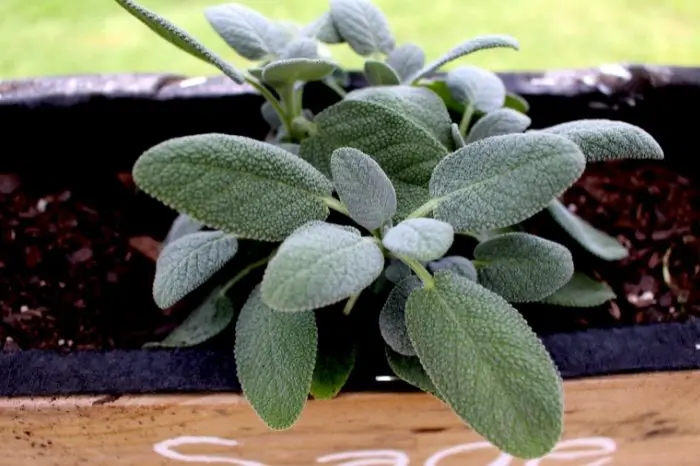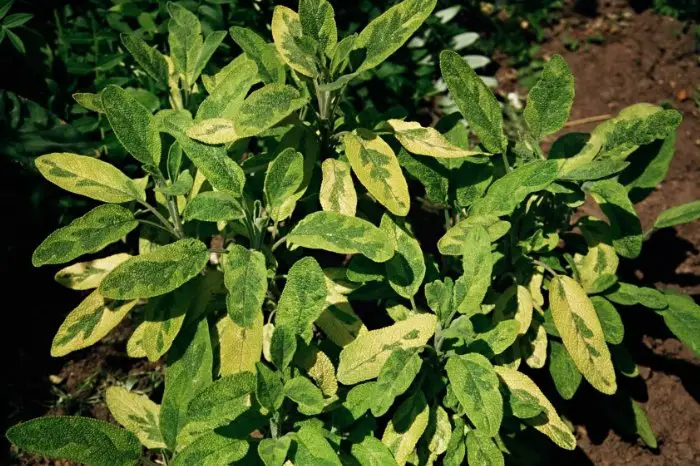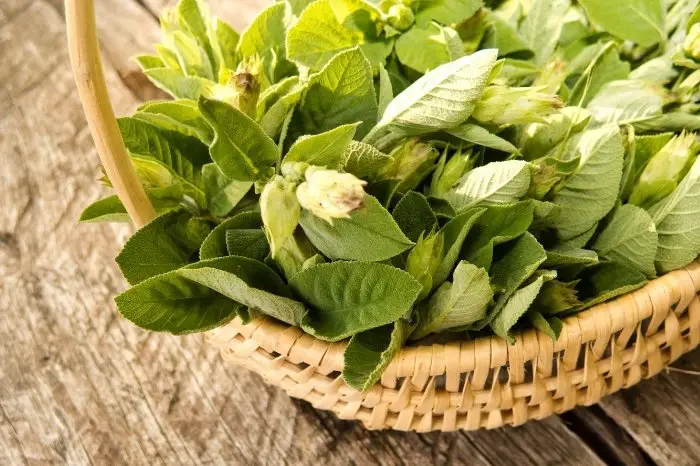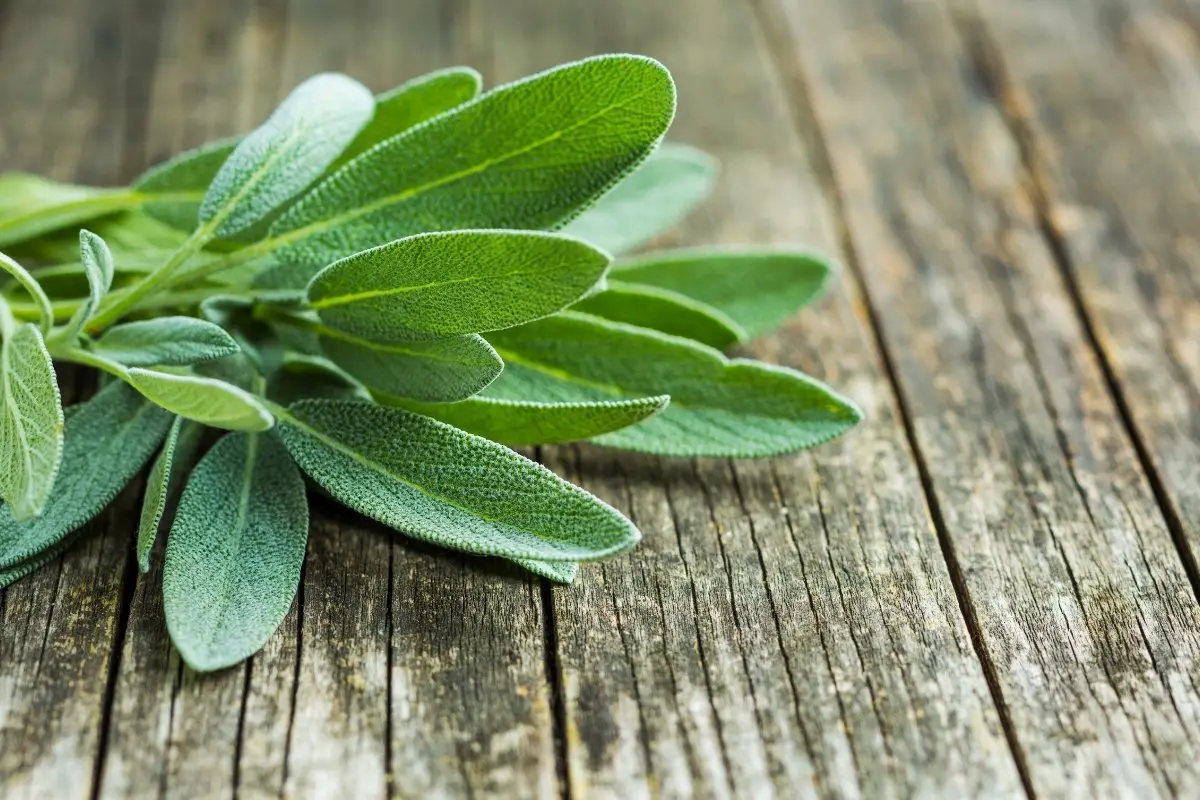Last Updated on January 11, 2022 by Cristina
Is sage annual or perennial plants that, once planted, can grow for many years without dying or having to be replanted?
Sage is popular both in the kitchen as well as for medicinal purposes. It is a pretty low shrub with pale velvet-soft grey-green leaves and a member of the mint family. Sage is easy to grow in the garden and containers outdoors or indoors.
If you are looking to add another herb to your garden, sage is one of those herbs you can add. It is famous for use in fall dishes complementing poultry and pork and pairing well with the lamb for Thanksgiving stuffing. It is also a perfect flavor to add to the winter squash dishes and risottos. Sage can be grown together with other Mediterranean herbs like basil or rosemary.
Is Sage Annual Or Perennial
Sage is perennial or annual! It is an annual or perennial plant depending on where you grow it. If you live in planting zones 5 to 8, your sage will be perennial. This means it will grow back each spring and give you a good harvest throughout its season.
If you are in zones 9 and further South, your sage plant will likely be an annual. This means it will grow for only one year and then die.
As long as you provide the proper care for a perennial seed harvest and prune every season, your plant can last you many years. Some gardeners have found that the plants get more and more woody as the years go by and that by the end of 3 years, the plant is no longer as productive as flavorful as it were.

Other gardeners swear that cutting back the woody stems at the end of each growing season can help your plants live for more years while still flavorful.
Sage is a cold-hardy plant simply going dormant in the winter in zone 5 to 8 and coming back the following spring.
Click here to Learn About:
Popular Types Of Annual Or Perennial Sage
There are over 900 species of sage (salvia) which is the largest genus of plants in the mint family.
Garden Sage
This sage is one of the most well-known varieties, also referred to as common sage. Is garden sage a perennial? Yes, this plant is hardy and resists even freezing temperatures during winter bouncing back each spring full of life. They have soft greenish silvery leaves with purple blush flowers making them a beautiful addition. This variety may become woody after 3 to 4 years of being replaced.
Berggarten Sage
This sage is very similar to the common garden sage in its looks, color, and style of leaves, but it does not bloom.
Golden Sage
Golden sage is a variety that features a creeping plant with green and golden variegated leaves. It is beautiful when growing with other plants as the colors accentuate whatever plants are growing around it.

Grape-scented Sage
This is one of the largest growing varieties that grow up to 8 feet tall by 6 feet wide. This sage does not smell like grapes; as the name implies, rather, it has a sweet smell of freesia. Its leaves and flowers attract hummingbirds and can be steeped to make tea.
Mexican Bush Sage
This sage is drought tolerant and grows up to 3 to 4 ft tall. It can withstand drought conditions being a tender perennial with purple or white flower spikes.
Mealy-cup Sage
Mealy-cup sage is the most common version, also known as blue salvia. It grows up to 2 to 3 feet tall and is mainly grown annually, depending on the region you live in. It has white, purple, or blue flowers spikes and has several varieties like victoria blue and empire purple.
Purple Sage
Purple sage plants have purple leaves when young. Unlike garden sage, it is also used for cooking but doesn’t bloom very often.
Scarlett Sage
This annual plant prefers full sun but can also tolerate some partial shade. It thrives in well-drained soils and boasts of gorgeous colored blooms produced from late summer to the first days of frost.
Seed Needs, Scarlet Red Sage (Salvia coccinea) Twin Pack of 800 Seeds Each
Pineapple Sage
This type of sage is primarily grown as an ornamental plant and is widely thought to have medicinal properties. It produces tubular red flowers and attracts butterflies and hummingbirds.
White Sage
White sage is also known as bee sage and is used for cooking. This variety is a slow-growing evergreen perennial shrub that can live up to 3 years growing up to 2 to 3 feet tall.
Tricolour Garden Sage
This variety is similar in looks to the purple sage. It has white uneven accented leaves giving it the perception of being tri-colored.
Read more about When Is Okra Ready To Pick? – An Overview
How To Grow Sage
Sage is another herb that requires full sun position and doesn’t like summer humidity or wet roots. It also requires good drainage and air circulation to keep the plants healthy. It is commonly grown in containers, especially in the humid storage rooms where it does well due to the extra drainage and airflow.
This plant can withstand poor soils but improving them with compost or manure enhances its growth. It is essential to boost your calcium levels by applying a fertilizer that mimics the Mediterranean soil conditions.
Most gardeners buy a sage plant from the nursery to get it started, but it can also be grown from seed. When starting from seeds, sow them directly into the ground in spring after the last day of the frost or early summer, and they will germinate in 3 to 4 weeks.
You can also plant cuttings from established plants in the spring or summer. It is easier and faster as they will be ready for you to pick leaves in a month or so. Ensure that you water your plants to improve your success rate, and you can mulch them lightly.
After the first planting, sage successfully produces new plants from the branches that layer onto the soil and take root. This can be easily cut off and make great transplants for the next season.
Check Out 10 Home Remedies For Japanese Beetles
Fertilizing and pruning sage
To get better produce every season, sage loves a good application of organic fertilizer once or twice a year to boost its calcium levels. You can also apply a fertilizer that enhances the leaves’ flavor and keeps your sage growing to its maximum potential each month.
Sage does not need much attention when it comes to pruning. Its low maintenance attracts more gardeners to grow it. You will need to trim back the flower spikes once they are finished in the summer season.
Harvesting
A month or so after planting, pick individual sage leaves throughout its growing season or as you need them. You can use them fresh or dry them for future use.

Conclusion
Is sage perennial or annual? Depending on where you live you can grow this plant as either. You will only need to understand your USDA hardiness zone and the requirements to grow sage, and voila, you have your herb successfully growing.
Caroline is a gardener who loves to get down to the nitty–gritty of gardening. She proudly proclaims herself as a ‘dirt worshipper‘ and can often be found deep in the garden, covered in soil and singing to her plants. As a self–proclaimed ‘plant whisperer‘, Caroline believes that plants need love and attention just like any other living thing, and she loves to give them both. When she‘s not tending to her garden, you can often find her researching the latest gardening trends, or teaching others how to make their gardens thrive



